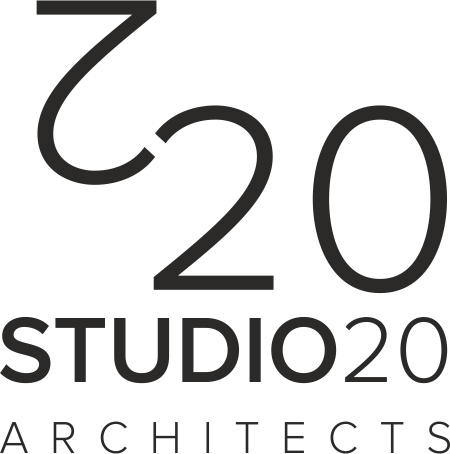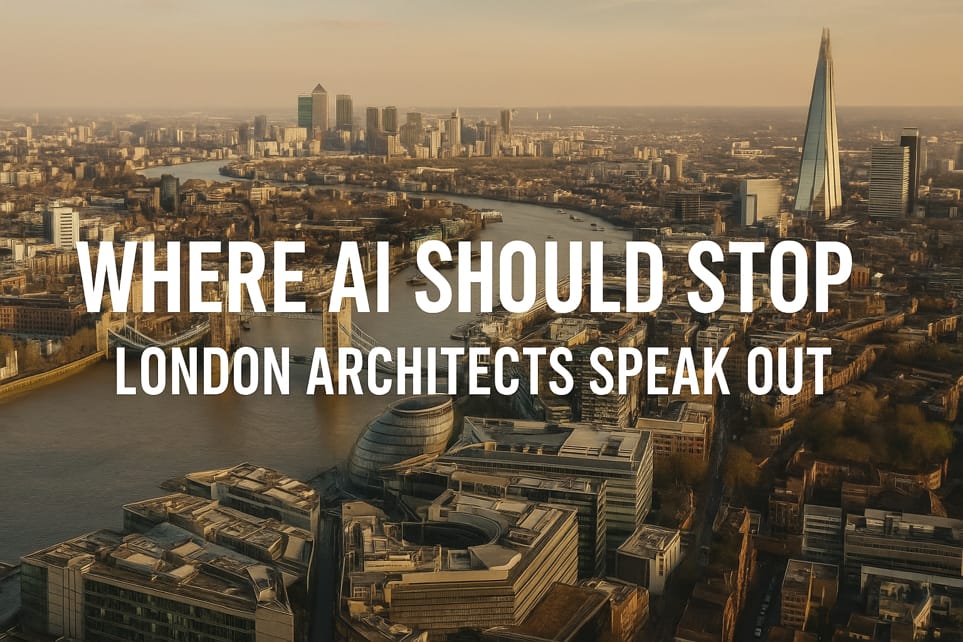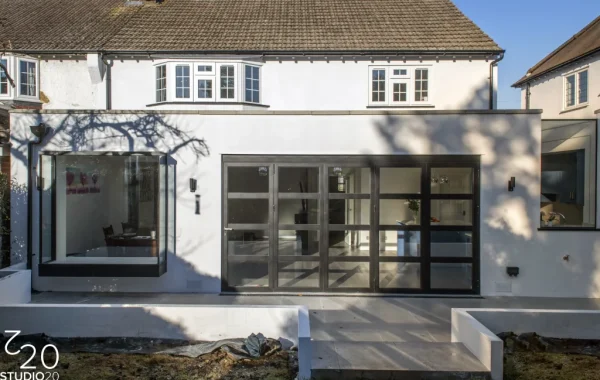Artificial intelligence (AI) has entered almost every corner of modern life, from finance to healthcare, and architecture is no exception. In London, a city where historical preservation meets cutting-edge innovation, architects face a unique challenge: balancing technology with human creativity. While AI can assist in design, modeling, and project management, many professionals argue that it should not replace the intuition, ethics, and cultural sensitivity that define architecture.
Key Takeaways
- AI excels at calculations, simulations, and optimization but cannot replace human judgment.
- Architects maintain accountability and ethical responsibility for AI-assisted designs.
- Creativity and cultural sensitivity remain uniquely human qualities in architecture.
- AI works best as a collaborative tool, enhancing rather than replacing designers.
- Clear regulations and guidelines help ensure AI supports community and design integrity.
AI in Architecture: The Current Role
In London’s architecture scene, AI already supports numerous tasks. Algorithms can generate 3D models, predict structural weaknesses, and simulate environmental impacts. Firms use AI to optimize layouts for natural light, airflow, and energy efficiency. AI also speeds up documentation, reducing the time architects spend on repetitive tasks.
Yet, many London architects, including the team at Studio 20 Architects, insist that AI should remain a tool, not a decision-maker. “AI can suggest solutions, but it cannot judge whether a building resonates with the community,” says Eleanor Finch, a principal at Finch & Partners. “Architecture is not just about efficiency—it is about experience, identity, and social impact.”
Where AI Can Go Too Far
AI can produce impressive designs within seconds, but it lacks context. Buildings are more than structures; they are social spaces shaped by history, culture, and human behavior. When AI assumes too much authority, these dimensions risk being ignored.
Some architects highlight the dangers of over-reliance on AI in historic districts. For example, in London’s Bloomsbury or Mayfair, a building cannot simply maximize floor space or mimic popular aesthetics. Decisions must account for heritage, sightlines, and the neighborhood’s social fabric. AI can propose efficient solutions, but it cannot respect centuries of architectural nuance.
Furthermore, AI may promote homogeneity. Algorithms often rely on existing data patterns. Over time, this could lead to London projects that look similar, prioritizing formulaic efficiency over originality. Architects warn that London’s skyline could lose its diversity if AI dominates creative decision-making.
Human Judgment Remains Crucial
AI excels at pattern recognition, optimization, and prediction—but architecture requires judgment that machines cannot replicate. Designers assess spaces emotionally, ethically, and socially. They consider questions like: Will this building foster community? Does it reflect the city’s identity? How will it impact the environment and neighbors?
Dr. Ravi Singh, a London-based architect, emphasizes, “AI can calculate sunlight or wind loads, but it cannot weigh moral or cultural consequences. Those remain human responsibilities.” This statement captures a growing sentiment in the architectural community: technology can assist, but final decisions must stay human.
Ethics and Accountability
Another critical concern involves accountability. If AI generates a design that fails—structurally or socially—who bears responsibility? Architects insist that human oversight cannot be optional. Firms cannot delegate ethical or legal responsibility to software.
London has faced controversies over large developments that disrupted local communities. Architects fear that if AI contributes to similar projects without human judgment, accountability could become blurred. “AI should never take the blame,” says Finch. “It can inform choices, but architects must remain accountable for outcomes.”
Preserving Creativity
London architects also stress the creative dimension of their profession. While AI can generate options quickly, it cannot originate concepts in the same way a human mind can. Architecture is an art as well as a science, and imagination drives design in ways that data cannot predict.
For instance, architects often respond to subtle cues from clients, communities, or site conditions—cues that AI might overlook. A small alley, a historic facade, or a local festival could inspire design choices that machines cannot anticipate. Creativity requires empathy and cultural sensitivity, traits AI cannot replicate.
Collaboration, Not Replacement
Many London firms advocate for AI as a collaborator rather than a replacement. Designers use AI to handle calculations, simulate conditions, or produce drafts, freeing architects to focus on innovation, strategy, and storytelling. This approach allows technology to enhance human talent rather than diminish it.
“AI should be a partner,” notes Singh. “It handles the heavy lifting, but humans drive the vision. We define purpose, meaning, and context.” This collaboration model highlights a growing philosophy: AI works best when it complements human skills instead of substituting them.
Regulation and Industry Standards
Architects also call for clearer regulations around AI in design. While software development often moves faster than law, architects stress that oversight is necessary to protect communities and maintain design integrity. Guidelines could address issues like ethical responsibility, data usage, and transparency in AI-assisted design processes.
Some London councils already review AI-influenced designs more rigorously, requiring architects to explain choices made with algorithmic input. These measures aim to prevent errors, preserve aesthetics, and safeguard public interest.
The Future of AI in Architecture
Looking ahead, London architects anticipate AI will play an increasingly significant role—but always under human supervision. They imagine AI as a tool that enhances efficiency, simulates scenarios, and generates insights while leaving judgment, creativity, and ethics to humans.
AI could even expand possibilities. By processing vast datasets, it might suggest innovative solutions that humans might overlook. Yet, architects insist that these suggestions remain just that—input for human decision-making. London’s architectural identity depends on balancing innovation with tradition, efficiency with empathy, and technology with artistry.
Case Studies
Some recent projects in London demonstrate the balance between AI and human creativity.
-
The Shard’s Renovation Plans: AI helped analyze structural load distribution and energy consumption, but human architects redesigned interior spaces to reflect cultural and aesthetic considerations.
-
Hackney Green Housing Project: AI generated layouts that optimized sunlight exposure and ventilation, yet community workshops guided final building orientations and facade choices.
-
City of London Public Spaces: AI mapped pedestrian flows and environmental factors, but architects manually curated features that enhanced social interaction and local identity.
These examples reveal a consistent theme: AI enhances efficiency, but human architects shape meaning and experience.
Challenges Remain
Despite the promise, challenges persist. Training architects to use AI effectively, avoiding over-dependence, and maintaining accountability require ongoing effort. Firms must invest in both technology and professional judgment, ensuring that architects retain authority over final designs.
Another challenge is cultural sensitivity. London is a diverse metropolis with varying communities, each with unique expectations. AI may not fully recognize social nuances, reinforcing the need for human oversight.
Finally, sustainability raises questions AI alone cannot answer. While algorithms can optimize energy use, architects must consider long-term social and ecological impacts. Decisions about materials, public access, and integration with natural landscapes remain deeply human responsibilities.
Final Thoughts
London architects speak with one voice on this topic: AI can assist, but it should not replace the human mind in architecture. Creativity, ethics, social awareness, and accountability cannot be coded. AI excels as a tool for optimization and simulation, but humans must define purpose, ensure fairness, and safeguard cultural identity.
Architecture is more than efficiency; it shapes how people live, work, and connect. In London, a city layered with history and modernity, architects insist that technology must never override human insight. The skyline, streets, and communities depend on it.
FAQs
1. Can AI completely design buildings without human input?
No. AI can generate options, but human architects must assess cultural, ethical, and social implications. Final design decisions remain human responsibilities.
2. What tasks does AI handle in architecture?
AI manages simulations, calculations, 3D modeling, and optimization of energy or material use. It accelerates technical work but cannot interpret meaning or context.
3. How do London architects balance AI and human creativity?
They use AI to handle data-intensive tasks while making all critical design, ethical, and aesthetic decisions themselves. Collaboration, not replacement, is key.
4. Are there risks if AI dominates architectural design?
Yes. Over-reliance can lead to homogenized designs, reduced creativity, and loss of cultural sensitivity. Accountability may also become unclear.
5. Will AI shape the future of London’s architecture?
Yes, but under human supervision. AI can enhance efficiency and suggest innovations, but humans will continue to define purpose, meaning, and social impact.





